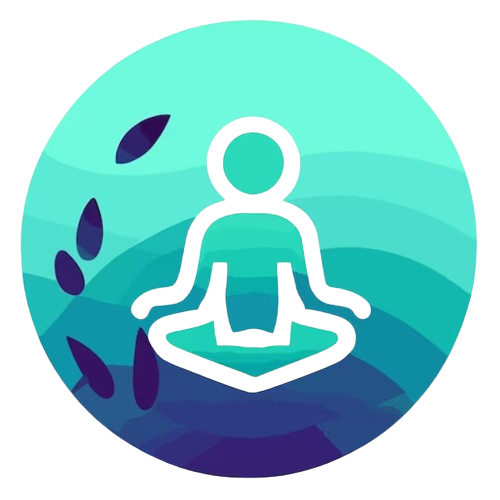Add 2 tbsp to your bedtime routine…
Unique Techniques to Reduce Joint Pain Naturally
Joint pain can be a persistent obstacle to living an active and fulfilling life. While traditional treatments like medications and physical therapy are helpful, incorporating unique and natural techniques can provide additional relief and improve joint health over time. Here are some innovative and holistic approaches to manage and reduce joint pain effectively.
1. Contrast Therapy
This technique alternates between hot and cold treatments to improve circulation and reduce inflammation in the joints.
How to Do It:
- Soak a towel in warm water (not too hot) and apply it to the affected area for 3-5 minutes.
- Switch to a cold compress or ice pack for 1-2 minutes.
- Repeat this cycle for 15-20 minutes.
Why It Works: The heat relaxes stiff muscles and improves blood flow, while the cold reduces swelling and numbs pain.
2. Anti-Gravity Yoga
Anti-gravity or aerial yoga involves practicing yoga poses while suspended in a hammock, reducing the impact on joints.
Benefits:
- Enhances flexibility and range of motion.
- Reduces joint compression by utilizing body weight in a suspended state.
- Strengthens muscles around joints, improving stability.
Getting Started: Join a beginner’s anti-gravity yoga class to learn the basics in a controlled environment.
3. Epsom Salt Soaks with Essential Oils
Epsom salts, rich in magnesium, can relax muscles and reduce joint inflammation. Adding essential oils enhances the therapeutic effects.
How to Prepare:
- Fill a tub with warm water and add 2 cups of Epsom salt.
- Include a few drops of essential oils such as eucalyptus, lavender, or peppermint.
- Soak for 20-30 minutes.
Pro Tip: Regular soaks 2-3 times a week can offer long-term joint pain relief.
4. Acupressure for Joint Relief
Acupressure involves applying gentle pressure to specific points on the body to alleviate pain and enhance energy flow.
Key Points for Joint Pain:
- LI4 (Hegu): Located between the thumb and index finger, this point helps reduce pain and inflammation.
- GB34 (Yanglingquan): Found on the outer side of the knee, it targets stiffness and joint discomfort.
How to Use:
- Press firmly on the identified points for 1-2 minutes.
- Practice daily or as needed.
5. Incorporate Functional Foods
Diet plays a crucial role in managing joint pain. Include these unique foods for their anti-inflammatory properties:
- Tart Cherry Juice: Contains anthocyanins that reduce inflammation and muscle soreness.
- Bone Broth: Packed with collagen and glucosamine to support cartilage repair.
- Seaweed: High in iodine and omega-3s, it aids in reducing joint stiffness.
Quick Recipe: Blend tart cherry juice with a splash of sparkling water for a refreshing anti-inflammatory drink.
6. Dynamic Stretching Routines
Unlike static stretching, dynamic stretches keep your joints moving, promoting lubrication and flexibility.
Examples:
- Arm circles for shoulder relief.
- Leg swings for knee mobility.
- Cat-cow stretches for spine and hip flexibility.
When to Do It: Incorporate dynamic stretches into your daily routine or before physical activity.
7. Mindfulness-Based Stress Reduction (MBSR)
Chronic stress can worsen joint pain. MBSR techniques combine meditation and yoga to alleviate stress and reduce pain perception.
How to Practice:
- Dedicate 10-15 minutes daily to mindfulness meditation.
- Focus on your breath and bring attention to the present moment.
- Try guided MBSR apps or attend a workshop for structured learning.
8. Wearable Infrared Therapy
Infrared light therapy uses light waves to penetrate deep into tissues, promoting healing and reducing joint pain.
Devices:
- Infrared wraps or belts.
- Compact hand-held devices for targeted relief.
Advantages: Safe for regular use, non-invasive, and effective for conditions like arthritis.
9. Floating Therapy (Sensory Deprivation Tanks)
Floating therapy involves lying in a tank filled with Epsom salt water, allowing you to float effortlessly.
Benefits:
- Relieves joint pressure.
- Eases muscle tension.
- Promotes mental relaxation, indirectly reducing pain.
Where to Try It: Many wellness centers offer floating sessions, which last around 60-90 minutes.
10. Guided Imagery for Pain Management
This mental technique involves visualizing calming scenarios to distract the brain from focusing on pain.
How to Practice:
- Sit in a quiet space and close your eyes.
- Visualize yourself walking on a serene beach or lying in a lush meadow.
- Engage all senses in the imagery—feel the breeze, hear the waves, and smell the fresh air.
Duration: Spend 10-15 minutes a day practicing guided imagery.
Joint pain doesn’t have to dictate your daily life. By exploring these unique techniques, you can find relief and empower your journey toward healthier, more comfortable joints. Combine these practices with a balanced lifestyle, regular exercise, and a nutrient-rich diet for the best results.

